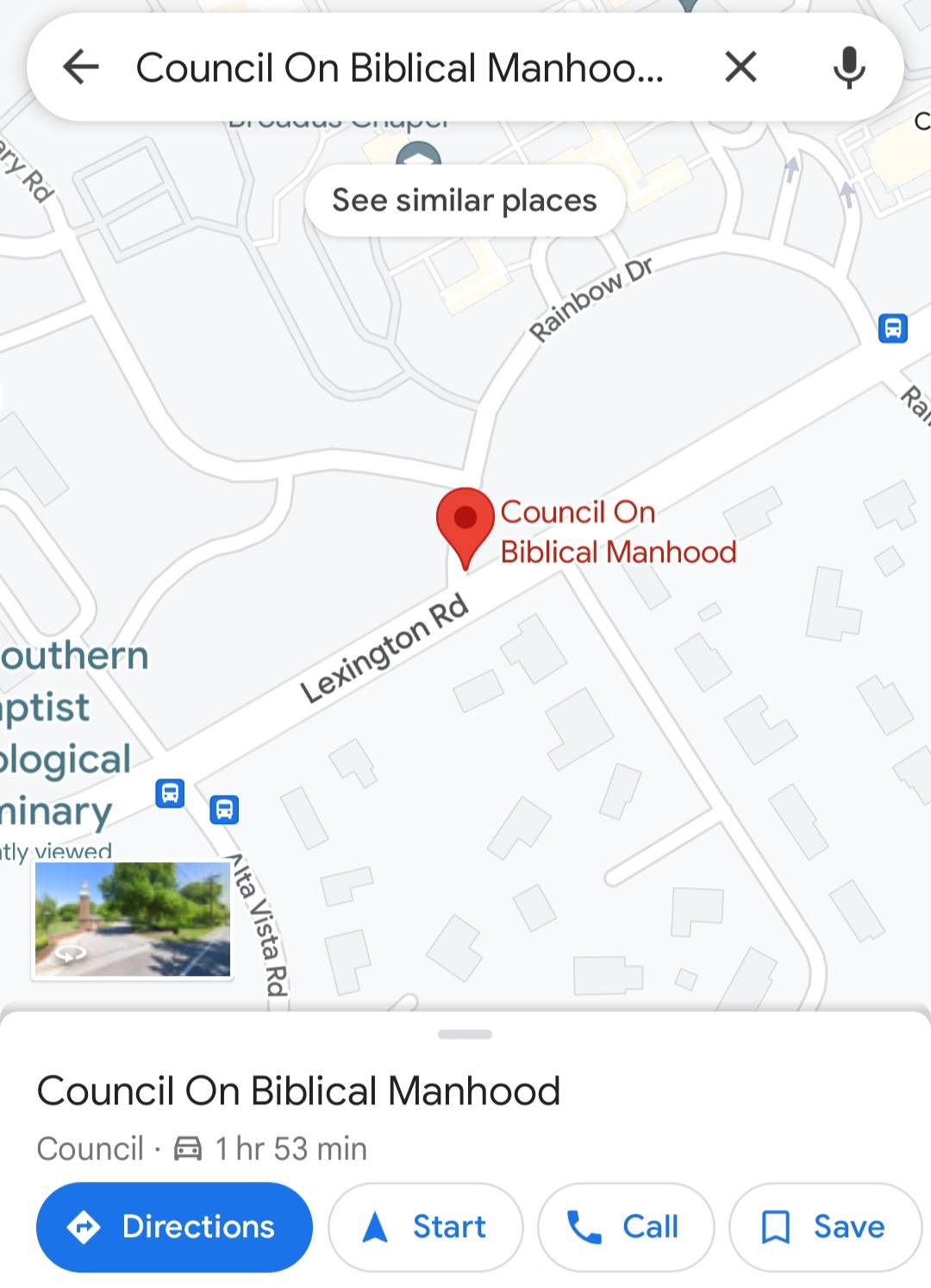Lady faith and becoming 'the angel in the house'
Some of the roots of so-called Biblical womanhood
A couple of months ago, I was in Louisville, Kentucky reporting for my book, when a wild hair struck. Louisville is home to the Council on Biblical Manhood and Womanhood, which according to CBMW’s nonprofit filings, is on the campus of Southern Baptist Theological Seminary. If ever there was an organization with which I’ve had a years’ long debate—largely within the bounds of my own mind—CBMW is it. If you don’t know it, you may have missed their 1987 founding Danvers Statement addressing the tragedies of feminism, growing acceptance of relationships previously considered “illicit,” and women in church leadership roles. You may not know that, according to CBMW, a key solution to those perceived crises was wives forsaking “resistance to their husbands’ authority and grow in willing, joyful submission to their husbands’ leadership.”
I don’t know what I thought I was going to find. An office containing a half dozen men highlighting the Bible and throwing darts at prints of Eve in the Garden? I followed Google Map’s directions to a bush at the edge of SBTS’s front entrance. (Later, I called SBTS’s campus and no one I spoke to knew of an address on campus.)
The other mailing address I found on CBMW’s website (and to which donations can be sent) took me twenty minutes from campus to a non-descript office park. I didn’t see any signage indicating the nerve center for antiquated gender roles was housed inside, so I poked my head into a small lobby. A voice hollered from upstairs at the sound of the door, and I walked up to what was supposed to be CBMW’s office suite. There, I met a woman who didn’t recognize the Council’s name at first, but eventually told me a number of organizations use the space for occasional meetings and mail. I asked what their meetings are like—team check-ins just to make sure everyone still thinks women need to submit to men? She didn’t know and was too polite to speculate further.
This is how I spend my time, chasing after details like this. If it does exist, send me a photo—I want to SEE this place. If not, there’s nothing nefarious about an essentially virtual headquarters; it was just underwhelming for the influence of a group whose statements on gender have been adopted by major denominations, universities and schools.
For all the grief assertions about “Biblical” gender roles have caused women—and people of all genders—I’d almost rather have found a busy office of agitators and contemplatives.
Raised as I was, in mainstream Protestant churches, probably the greatest impact from these ideas for me were claims by more conservative friends that women ought not preach or hold leadership positions at church. But like with many other extreme ideologies, while those in the direct wake—here, say, Southern Baptist girls and women—feel the brunt, part of the wave still rushes out to greet the rest of us.
If you’ve ever read Rachel Held Evans’ A Year of Biblical Womanhood, you probably remember her more extreme enactments of Biblical commands for women, leading her to pitch a tent and sleep in the yard during her period. But those exercises, which even the CBMW wasn’t calling for, showed the absurdity of other elements that had been part of her theological milieu. She tried submitting to her husband in all things, which just left him feeling gross. She tried to be the much-lauded (in evangelical circles) Proverbs 31 woman, and because Held Evans couldn’t help but research, learned instead that rather than subservience, the Hebrew suggested becoming a woman of valor.
For my own upcoming book, Disobedient Women, and in my other reporting, I’ve wrestled with how in my lifetime this idea of Biblical womanhood became so significant again within some faith circles, and how in trying to fit that mold, millions of women’s personal decisions and therefore their lives, have been impacted by strict gender expectations codified as Biblical.
CBMW though, just represents a more contemporary artifact of this effort; the roots of this beast go much farther back. One major influence in creating the mold of so-called Biblical womanhood as we know it today can be traced back to an incredibly popular book published in 1841, A Treatise on Domestic Economy, which went on to 15 print editions. A real best-seller.
I wouldn’t have known about A Treatise on Domestic Economy if not for religion scholar Sara Moslener (whom I’ll be featuring in an interview in coming weeks). She described for me how in the Victorian era notions of white femininity were married with the aspiration of being the angel in the house. A virtuous woman could make the home into a sacred space.
The Treatise was written by Catharine Beecher, sister of Harriet Beecher Stowe (author of Uncle Tom’s Cabin). Catharine was the eldest daughter of a Presbyterian minister and evangelist, Lyman Beecher. She advocated women ought to serve as mothers and teachers. She also opposed women’s suffrage on the grounds that men were created for public leadership roles, and it was women’s duty to instill virtues and free-thinking in children, so their sons could grow up to make political decisions and girls could raise the next generation.
Keep reading with a 7-day free trial
Subscribe to In Polite Company to keep reading this post and get 7 days of free access to the full post archives.





